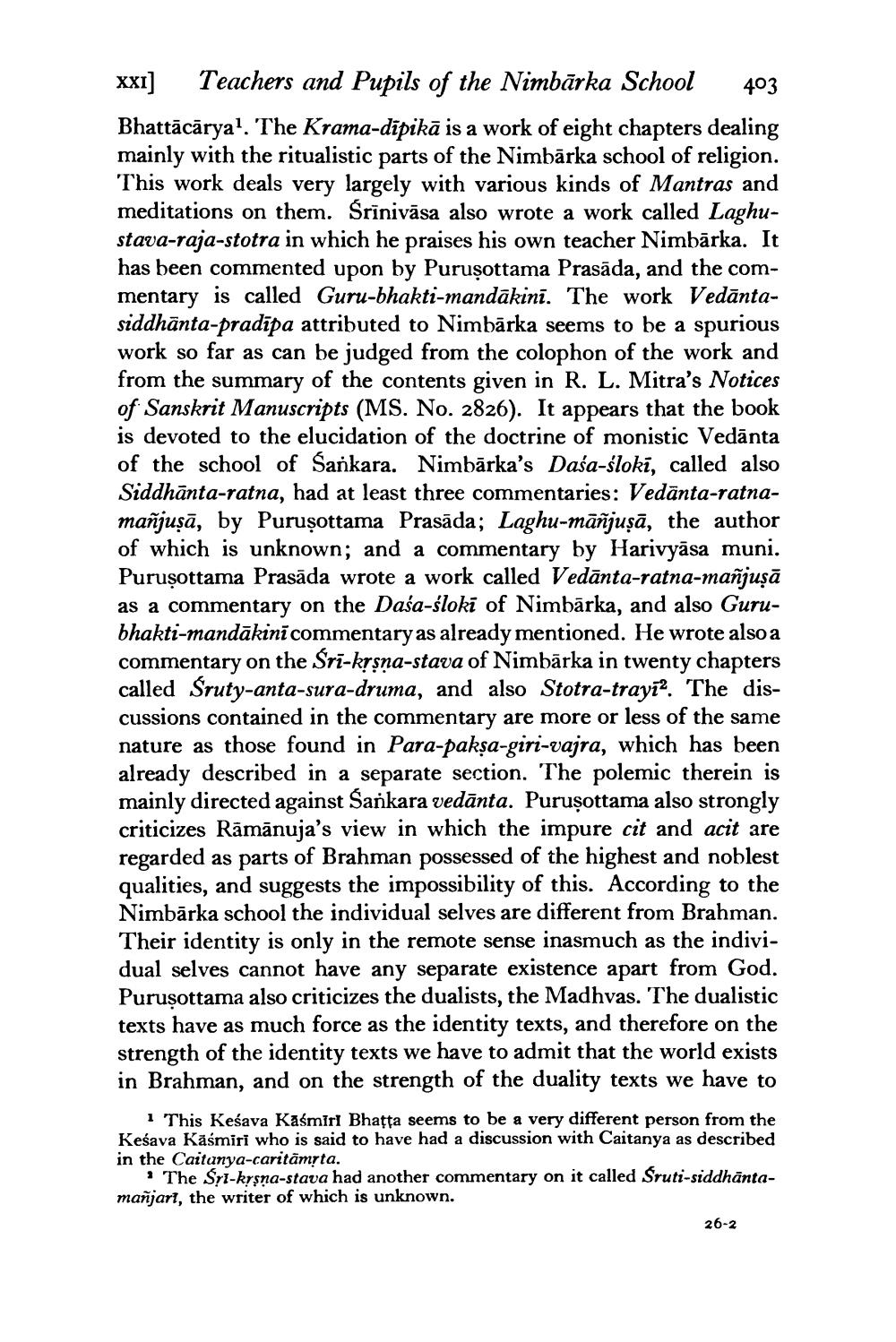________________
XXI]
Teachers and Pupils of the Nimbārka School 403
Bhattacārya1. The Krama-dīpikā is a work of eight chapters dealing mainly with the ritualistic parts of the Nimbārka school of religion. This work deals very largely with various kinds of Mantras and meditations on them. Śrīnivāsa also wrote a work called Laghustava-raja-stotra in which he praises his own teacher Nimbārka. It has been commented upon by Purusottama Prasada, and the commentary is called Guru-bhakti-mandākinī. The work Vedāntasiddhanta-pradipa attributed to Nimbārka seems to be a spurious work so far as can be judged from the colophon of the work and from the summary of the contents given in R. L. Mitra's Notices of Sanskrit Manuscripts (MS. No. 2826). It appears that the book is devoted to the elucidation of the doctrine of monistic Vedānta of the school of Sankara. Nimbārka's Dasa-śloki, called also Siddhanta-ratna, had at least three commentaries: Vedanta-ratnamañjuṣā, by Purusottama Prasada; Laghu-māñjuṣā, the author of which is unknown; and a commentary by Harivyāsa muni. Purusottama Prasada wrote a work called Vedānta-ratna-mañjuṣā as a commentary on the Dasa-śloki of Nimbarka, and also Gurubhakti-mandākini commentary as already mentioned. He wrote also a commentary on the Śrī-kṛṣṇa-stava of Nimbarka in twenty chapters called Śruty-anta-sura-druma, and also Stotra-tray. The discussions contained in the commentary are more or less of the same nature as those found in Para-pakṣa-giri-vajra, which has been already described in a separate section. The polemic therein is mainly directed against Šankara vedānta. Purusottama also strongly criticizes Rāmānuja's view in which the impure cit and acit are regarded as parts of Brahman possessed of the highest and noblest qualities, and suggests the impossibility of this. According to the Nimbārka school the individual selves are different from Brahman. Their identity is only in the remote sense inasmuch as the individual selves cannot have any separate existence apart from God. Purusottama also criticizes the dualists, the Madhvas. The dualistic texts have as much force as the identity texts, and therefore on the strength of the identity texts we have to admit that the world exists in Brahman, and on the strength of the duality texts we have to
1 This Kesava Kasmiri Bhaṭṭa seems to be a very different person from the Kesava Kāśmiri who is said to have had a discussion with Caitanya as described in the Caitanya-caritămṛta.
The Sri-kṛṣṇa-stava had another commentary on it called Śruti-siddhantamanjari, the writer of which is unknown.
26-2




